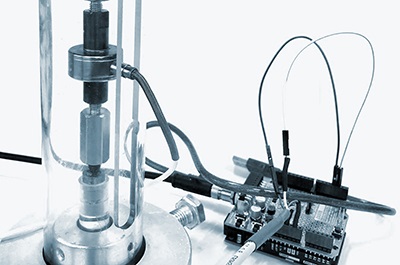
The comprehension of mechanical bone damage processes is a crucial point for the early diagnosis of bone pathologies. In particular, among fractures, age-related ones are particularly interesting because they are strongly linked to osteoporosis, a widespread pathology in elderly population that induces a substantial reduction in bone strength and a higher susceptibility to fracture. In the last decades, due to the increase in the average age of the population, osteoporosis represents an enormous burden from both a psycho-social and an economic point of view. In order to reduce the impact of bone fractures on health and economy, early diagnosis is the key. However, the prediction of bone fractures is difficult, because bone is characterized by a complex hierarchical structure and, more in depth, a deep comprehension of micro-scale damage is still lacking. In this context, GAP (image-Guided experimental and computational Analysis of fractured Patients) comes into play.The interaction between micro-damage and micro-scale features (such as lacunae, small cavities where osteocytes reside) are the focus of this work, because their role in damage initiation and propagation could be a hint in the premature diagnosis of osteoporosis. In the first instance, lacunae are stress concentrators, contributing to strength decreasing. However, considering bone as a damage-tolerant material, lacunae give a beneficial contribution to toughness, by deviating the damage path. So, while at the clinical level, macro-scale bone damage is clearly visible, the mechanisms that occur at the micro-scale (lacunar level) are still unknown.In order to shed some light on this aspect, an experimental approach is combined with ad-hoc numerical analyses.
A specific Gantt has been developed:
- Phase 1: Implementation of patient-specific computational damage models inside a dedicated framework on bone multi-scale analysis, in collaboration with the Laboratory of Bone Biomechanics (prof. Ralph Müller, ETH Zürich)
- Phase 2: Mechanical tests on human bone samples inside a synchrotron. Healthy and osteoporotic samples from human femoral heads are harvested after the already obtained approval of the ethic committee of Gruppo San Donato Foundation. The samples are tested inside ELETTRA synchrotron by means of an ex-novo compression device (light, X-ray transparent, transportable), completely designed and realized at DMEC. ELETTRA facilities allow to have not only a proper resolution that permits micro-architecture visualization, but also to highlight micro-damage by means of the phase contrast.
- Phase 3: Validation. The analysis of the output data from experimental tests will allow for a validation of the computational damage models, that has never been performed before.
The expected results should show a difference in damage propagation inside healthy and osteoporotic samples. This difference should be evaluated in terms of different parameters, leading to different outcomes in the research, clinical and social field.
Clinical parameters: the clinical parameter identified together with the ethic committee is the number of lacunae encountered by the damage. A preliminary hypothesis states that, in presence of osteoporotic patients, the number of lacunae interested by the damage progression will be lower with respect to healthy cases. In fact, the damage will be less deviated by lacunar network and its propagation is able to continue uninterruptedly.
Morphological parameters: the expected results will be able to highlight a difference in both the morphology of lacunae and the direction and orientation of damage in the three-dimensional space.
Mechanical parameters: the aim is to identify a different force-displacement curve for pathological samples too. This is a key in order to evaluate the decreased mechanical resistance in presence of bone pathologies. The impact of this research consequently lies in the possibility to understand the role of the lacunar network in the damage mechanism of bone at the microscale. This can spread some light and give new insights to the failure mechanisms of human bone at the microscale, leading to the definition of new micro-scale fragility indexes that could be implemented in diagnostic tools, useful in for the early diagnosis of bone pathologies.
In this huge network, the DMEC has a crucial role in the design of the overall experimental phase and in the realization of the novel micro-compression device, that is fundamental for the mechanical test of human bone samples. In addition to this, the PhD candidate Federica Buccino, that follows the project, has gained expertise in computational models while working at ETH. Federica, thanks to her double degree path with Alta Scuola Politecnica program, has developed transversal skills in biomedics, mechanics and management, that are useful for GAP project. Her work is performed under the crucial guidance of Professor Laura Vergani, that has a deep experience in the mechanical behavior of bone tissue. For this reason, Professor Vergani is responsible of the entire part developed at DMEC.
